Electrical power usually enters industrial control panels as one or more main circuits and must be properly converted and distributed based on the equipment service.
Most industrial control panels, certainly those UL 508A listed, will have incoming power circuits and some form of internal distribution. A variety of control panel elements are designed to provide overcurrent protection, transmit the power, convert between voltages, protect devices from surges and condition and improve the power.
Control panels serve many functions, often combining one or more of the following characteristics and components:
- Power distribution
- Voltage conversion and power supplies
- Motor starters and variable frequency drives (VFDs)
- Lighting contactors
- Hardwired (relay) controls
- Electronic (PLC, HMI, and smart device) controls
- Pneumatic solenoids
- Instrumentation
This article discusses in general terms some power distribution and conditioning concepts that apply to many industrial control panel situations.
Follow the Rules
All electrical distribution design and components must follow the applicable Codes (such as the NEC) and standards (such as UL 508A). The basic concepts include:
- Component selection: Choose only devices rated for the desired service. This includes active devices like power supplies, and also passive devices like terminal blocks and power distribution blocks.
- Overcurrent protection: Follow the NEC for sizing overcurrent devices (fuses and circuit breakers) to adequately supply downstream devices, while protecting downstream elements from high currents.
- Conductor sizing: Size conductors (wires, cables, terminals) to adequately supply downstream devices.
Typical Voltages
Common voltages used by general control panels for North America are:
- 480 Vac 3-phase (277 Vac 1-phase): Many industrial motors operate at this 3-phase voltage; sometimes this 1-phase voltage is used for lighting.
- 208 Vac 3-phase (120 Vac 1-phase): Often found in commercial buildings, some motors, such as in air conditioners, operate at this 3-phase voltage; the 1-phase voltage may be used for lighting and receptacles.
- 125 Vdc: Large power distribution switchgear often operates on this control voltage, which is generated by battery banks, letting the switchgear function for a time even if main power is unavailable.
- 120-240 Vac 1-phase 3-wire: Often found in residential buildings, the 3-wire 240 Vac would be used for large loads like home ovens and clothes dryers, while the 2-wire 120 Vac would be used for lighting and receptacles.
- 120 Vac: Most common voltage for general use and some controls.
- 24 Vdc: Preferred “touch safe” voltage for controls and many automation devices, can be generated redundantly as explained below.
- 24 Vac: Popular control voltage for heating, ventilation and air conditioning (HVAC) and refrigeration control applications, especially for NEC Class 2 circuits which provide field wiring benefits.
Transformers vs. Power Supplies vs. Inverters vs. Converters
Alternating current (AC) voltages are readily converted using transformers. These devices are relatively large and generate heat, so the preference is to use transformers external to control panels where possible, but there are many cases where small transformers can be safely installed within panels.
Power supplies are used to convert AC voltage to direct current (DC) voltage. Heat is also a consideration with these devices. An additional benefit of DC power supplies is that they can be redundantly combined through diode modules so that any one failure does not interrupt the system. Some power supplies also provide a status contact that can be used by the automation system to indicate the power condition.
Inverters change DC to AC voltage, and converters change DC to another DC voltage, but these devices are less common.
Surge Suppression vs. Power Conditioners vs. Line Filters vs. Reactors
Surge suppression devices are most often incorporated to protect expensive and relatively delicate electronic devices, especially where circuits enter or leave a control panel. They are less applicable for simple power distribution, motor control and lighting panels. High voltage surges often are generated from an external problem (like a lightning strike). Surge suppressors are designed to shunt these surges to ground and away from sensitive equipment.
Power conditioners are usually installed just upstream of electronic devices such as DC power supplies and PLCs and are highly recommended for these situations. They may be passive or active, but in either case serve to smooth the power waveform within normal operating conditions. Some of these devices include surge suppression features.
VFDs represent a special challenge, especially when installed in panels that also have other sensitive electronics. This is because the nature of VFD power switching can generate electrical noise upstream of the device. Line filters and/or line reactors can be installed upstream of each VFD to limit electrical noise.
Control Panel Power Distribution Design
A typical control panel may use any combination of the devices listed above, installed with overcurrent devices, wire, terminal blocks and power distribution blocks as needed.
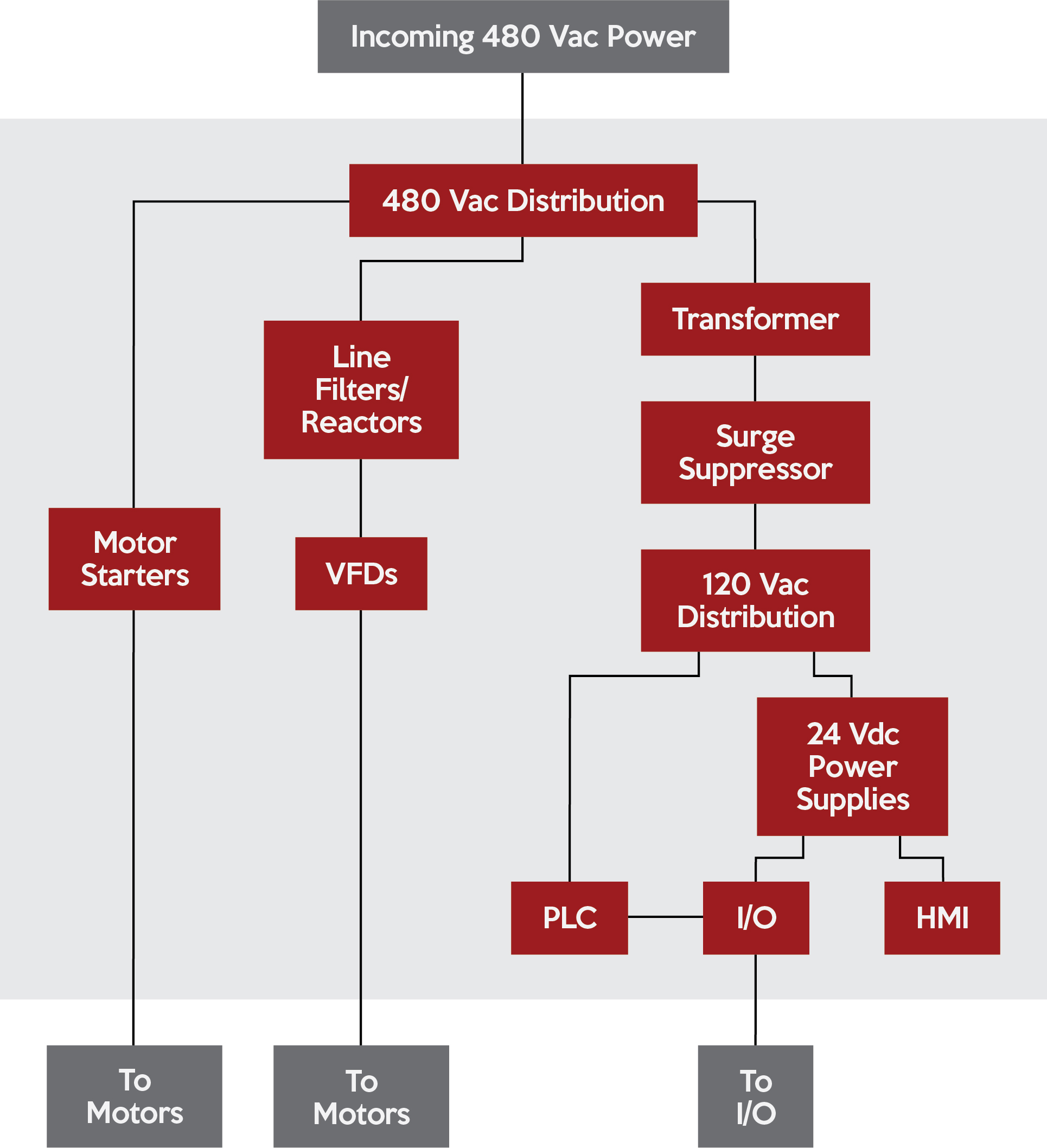
A typical arrangement might look like the chart above where incoming 480 Vac power supplies motor starters, VFDs (via line filters/reactors), and a transformer. The transformer steps the voltage down to 120 Vac, which is then surge suppressed and may be used directly by some devices such as PLC power supplies. For other devices and uses, such as HMIs and I/O, the 120 Vac is converted down to 24 Vdc.
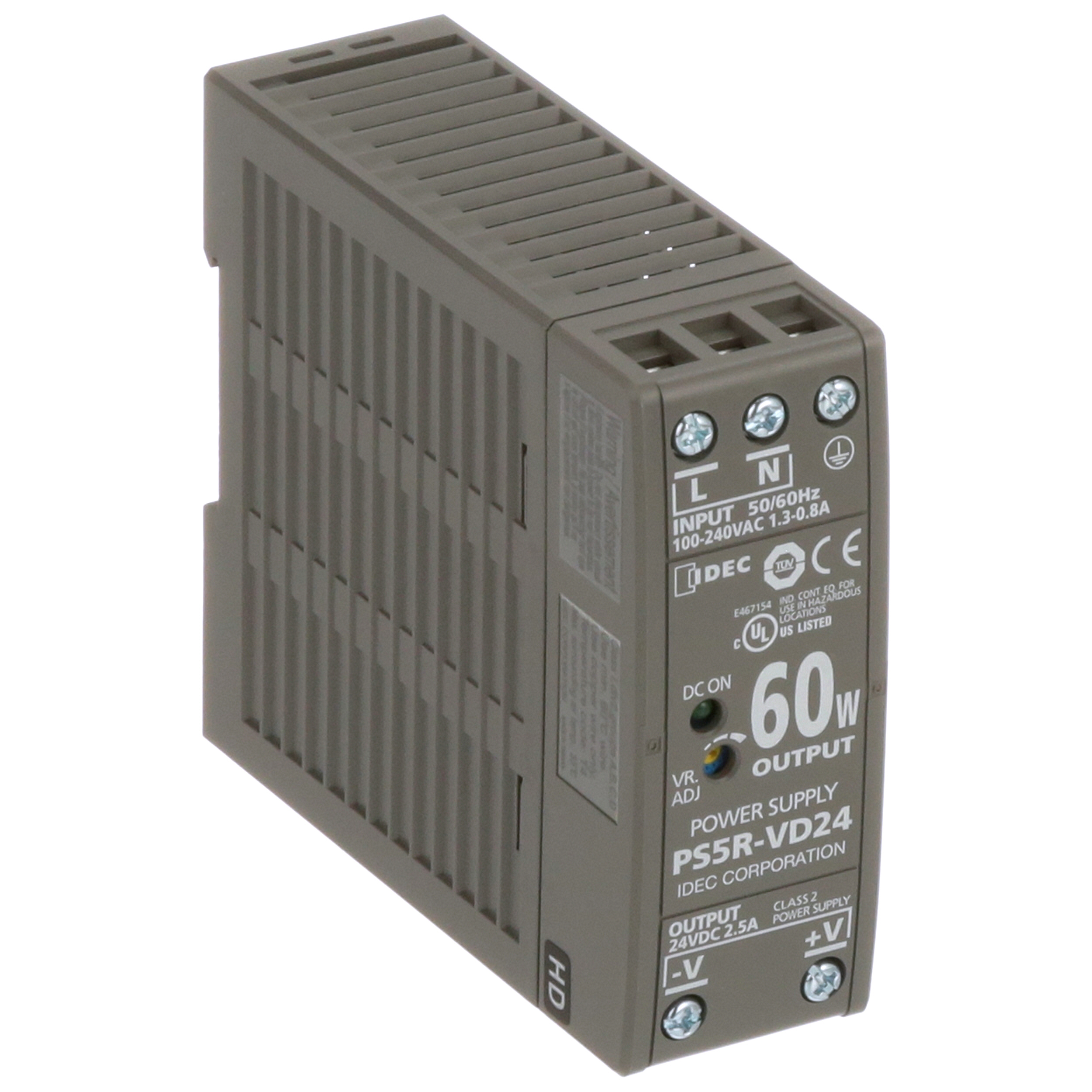
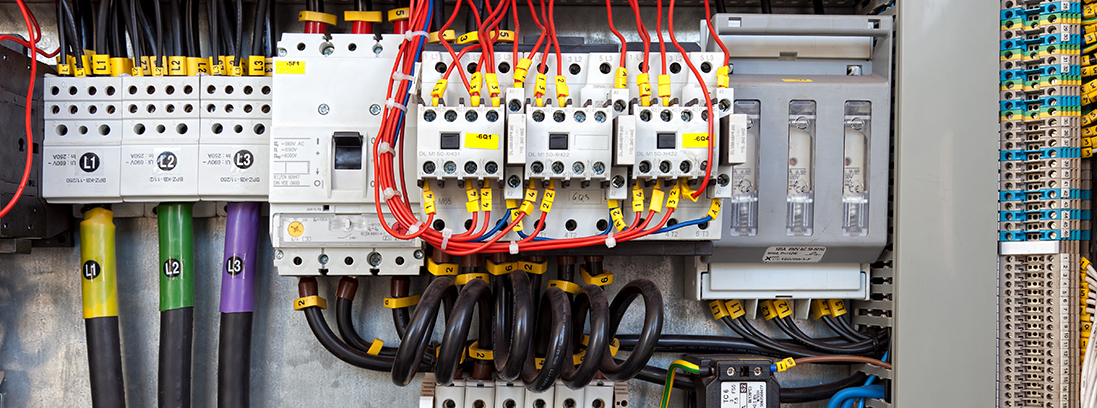
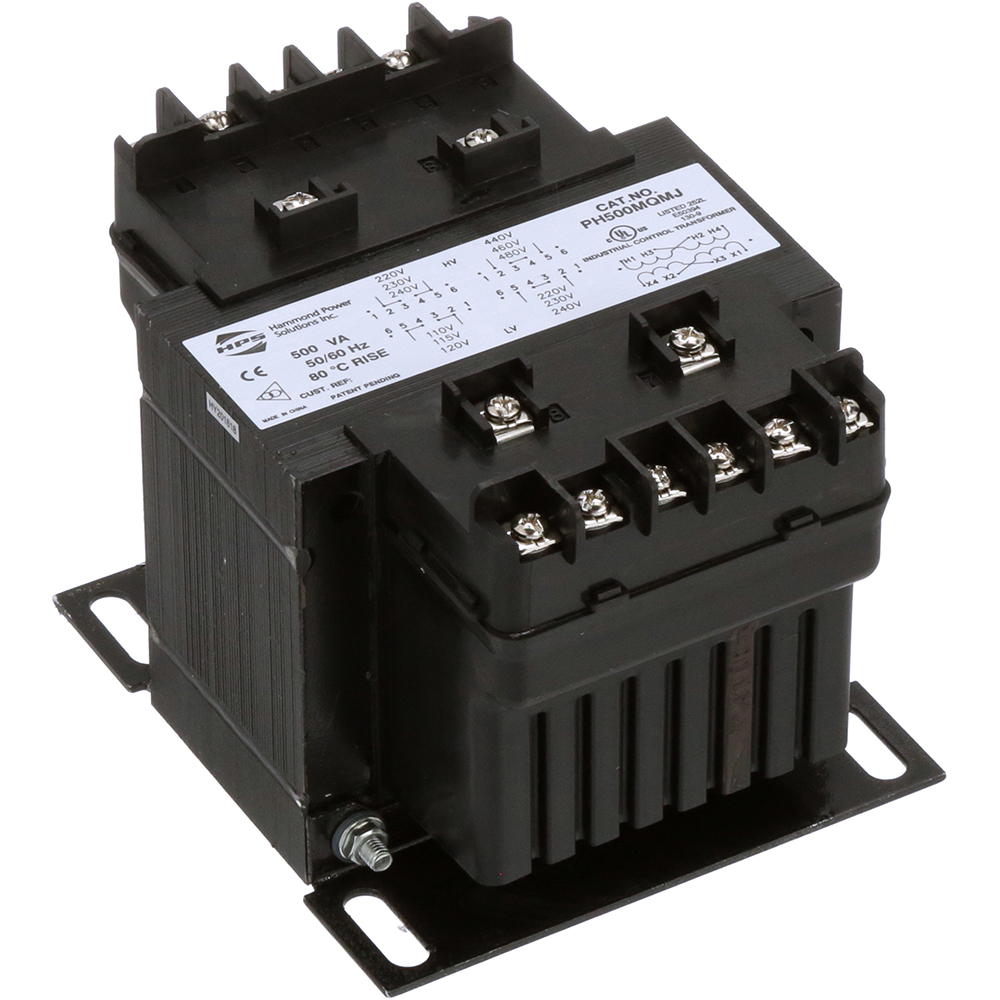
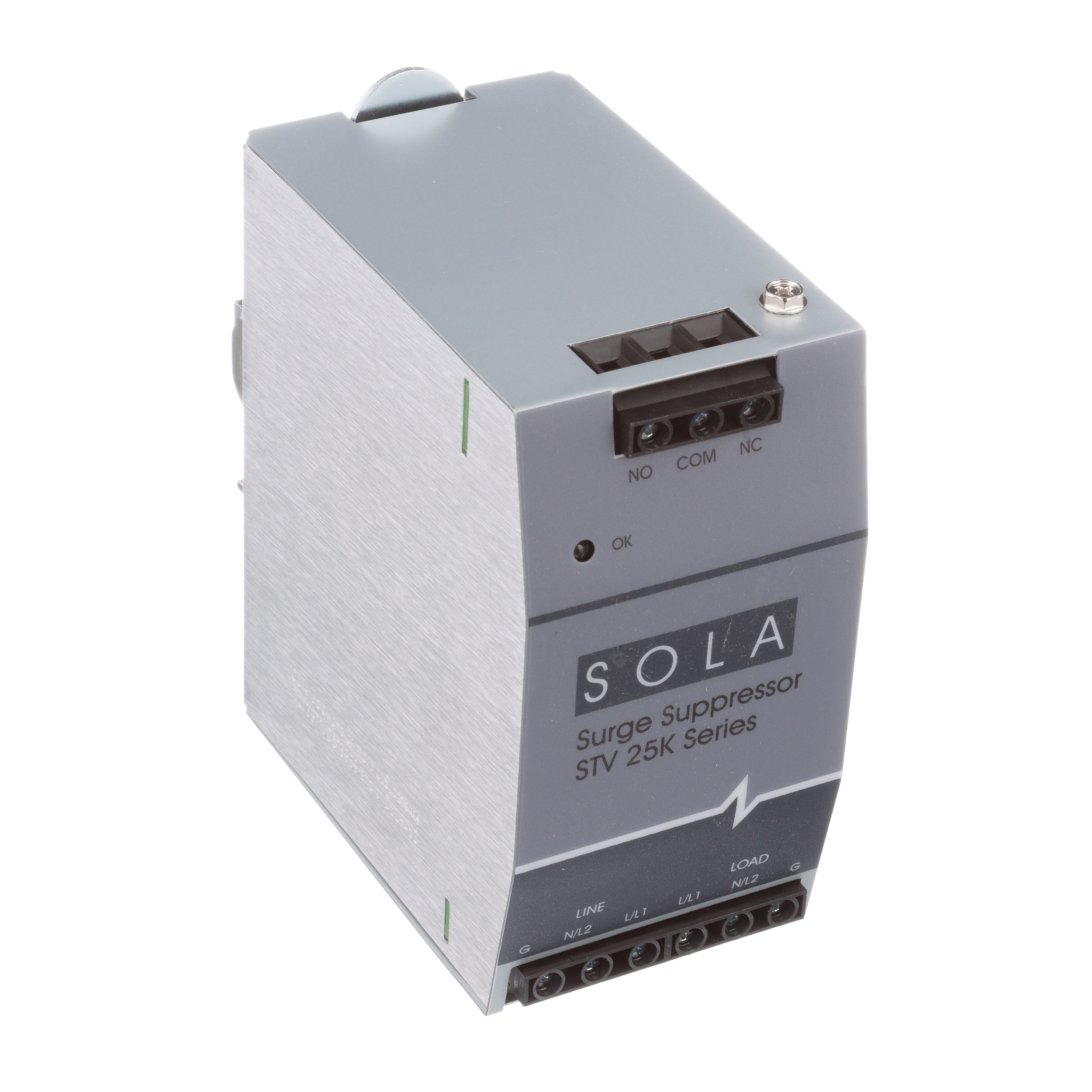
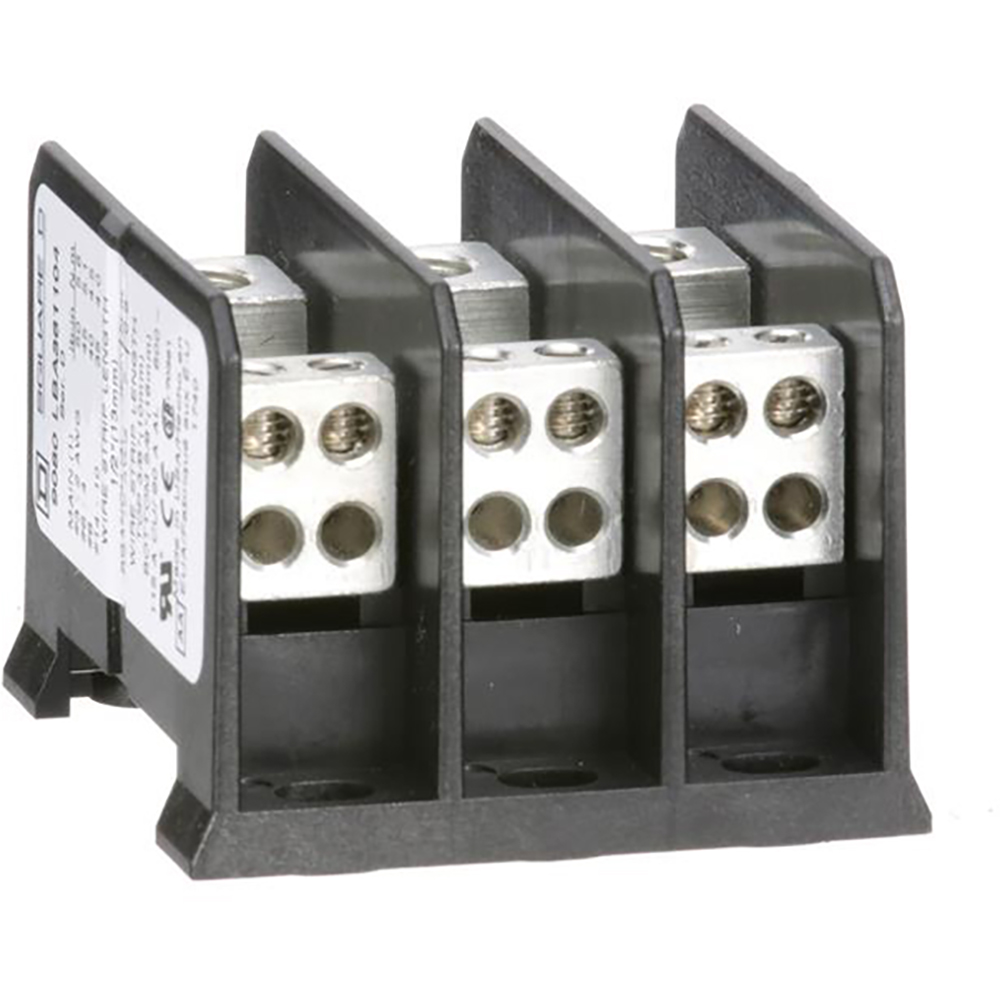

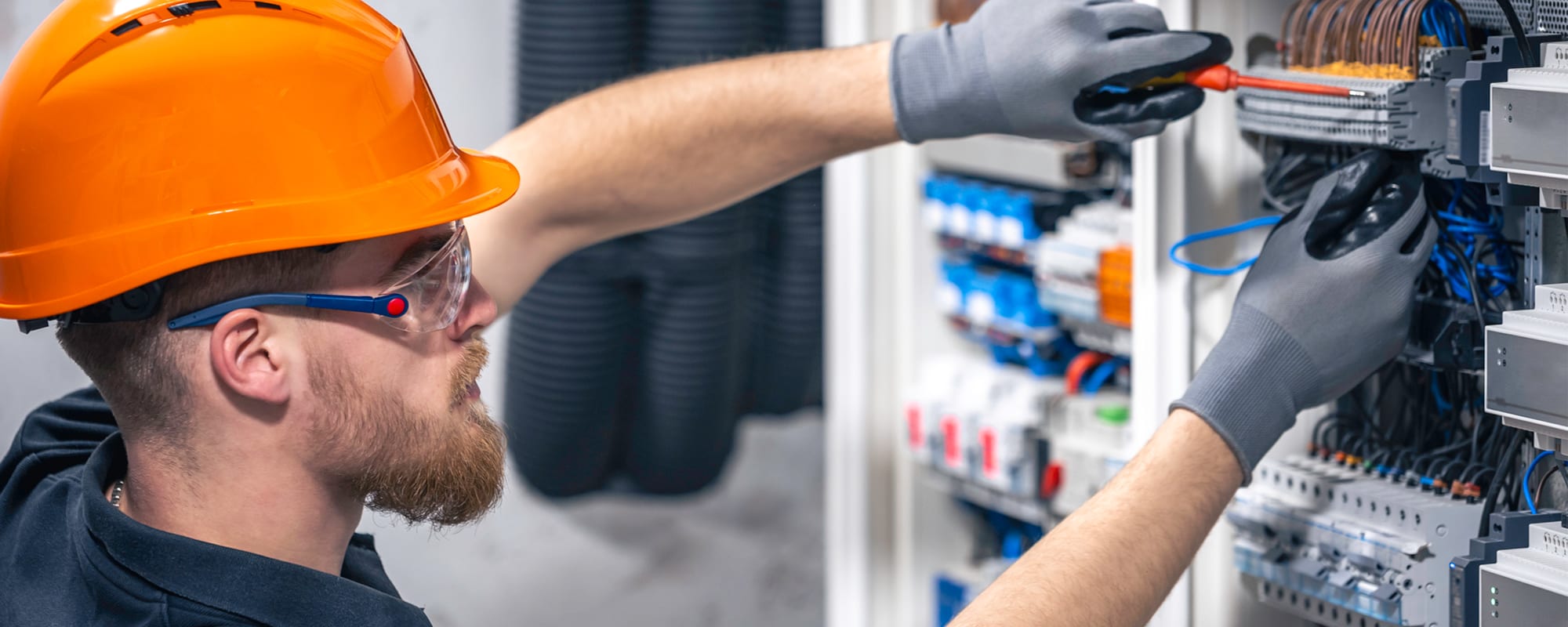




WE NEED 2 MOTORIZED BREAKER
COULD BE TMAX OR EMAX WE HAVE NO SUFFIENT SPACE TO BE FITTED
1000AMP
WALL MOUNTED
480 VOLTS
COILS 24VOLTS OR OPTION 480.
2 DRY CONTACTS NO AND NA
Thanks for contacting us! If you have questions about an order, need product information, or are looking for a quote, please reach out to us at (866) 433-5722 or email us at customer.service@alliedelec.com.
Very useful to engineers & technicians